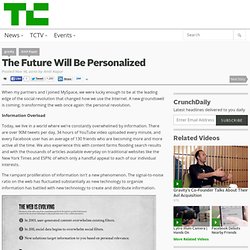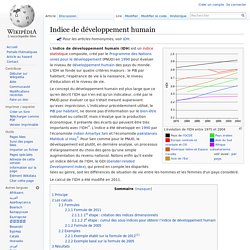

Living Earth Simulator will simulate the entire world. Described as a “knowledge collider,” and now with a pledge of one billion euros from the European Union, the Living Earth Simulator is a new big data and supercomputing project that will attempt to uncover the underlying sociological and psychological laws that underpin human civilization.

In the same way that CERN’s Large Hadron Collider smashes together protons to see what happens, the Living Earth Simulator (LES) will gather knowledge from a Planetary Nervous System (PNS — yes, really) to try to predict societal fluctuations such as political unrest, economic bubbles, disease epidemics, and so on. The scale of the LES, when it’s complete, will be huge. It is hoped that supercomputing centers all over the world will chip in with CPU time, and data will be corralled from existing projects and a new Global Participatory Platform, which is basically open data on a worldwide scale.
The project also has commercial backing from Microsoft Research, IBM, Yahoo Research, and others. Maximizing the impact of academic research. Maximising the impact of academic research Facebook Facebook Twitter Twitter RSS RSS Share this: Recent posts The key elements of a research story – Top Posts of 2015: Academic Writing Top Posts of 2015: Social Media and Digital Scholarship Book Review: The Two Degrees Dangerous Limit for Climate Change: Public Understanding and Decision Making.

Fact checking. Foresight and Innovation - Methods. Long-range foresight is about understanding the situation today, seeking future opportunities, and intelligently creating innovations. It echoes what management guru Peter Drucker described as the one trait he found in successful entrepreneurs, namely a commitment to approach innovation as a "systematic practice. " Based on our experience in industry and at different universities, we have developed nine Foresight tools as a systematic practice. With the combination of these tools, we believe you will be able to prepare successfully for the future and answer three fundamental questions: How do I begin looking for future opportunities? How can I create a path to these opportunities that anticipates the inevitable changes along the way?
Our process is designed to help all types of companies and people learn how to apply each method as part of an integrated, repeatable practice. World History : HyperHistory. THE LAB. The Future Will Be Personalized. When my partners and I joined MySpace, we were lucky enough to be at the leading edge of the social revolution that changed how we use the Internet.

A new groundswell is coming, transforming the web once again: the personal revolution. Information Overload Today, we live in a world where we’re constantly overwhelmed by information. There are over 90M tweets per day, 34 hours of YouTube video uploaded every minute, and every Facebook user has an average of 130 friends who are becoming more and more active all the time. We also experience this with content farms flooding search results and with the thousands of articles available everyday on traditional websites like the New York Times and ESPN: of which only a handful appeal to each of our individual interests. The rampant proliferation of information isn’t a new phenomenon. Their Web: The Early Days of The Internet In the early days, content was created and organized by professionals.
Our Web: Present Day Your Web: The Future. Trend map for 2010 and out to 2050. For the last few years Richard Watson of NowandNext has created annual trend maps based on city subway maps.

This year he has been more ambitious, creating a highly detailed map with five time zones, ranging from 2010-2015 out to 2035-2050. For the previous three trend maps (shown at the bottom) I collaborated with Richard and we co-branded them with Future Exploration Network, however time pressures this year meant that I haven’t directly contributed to the 2010 map. It is still as rich and glorious as ever – spend some time delving into the trends ahead! – Ageing – Power shift Eastwards. Zeitgeist 2010. Real time web. NEWS TERREMOTI. Live Earthquakes Map. Worldometers - real time world statistics. Statistiques mondiales.com. Interactive maps and visualizations. World Values Survey. Vision of Humanity.
The Happy Planet Index 2.0. Indice de développement humain. Un article de Wikipédia, l'encyclopédie libre.

Pour les articles homonymes, voir IDH. L'évolution de l'IDH entre 1975 et 2004 Le concept du développement humain est plus large que ce qu'en décrit l'IDH qui n'en est qu'un indicateur, créé par le PNUD pour évaluer ce qui n'était mesuré auparavant qu'avec imprécision. L'indicateur précédemment utilisé, le PIB par habitant, ne donne pas d'information sur le bien-être individuel ou collectif, mais n'évalue que la production économique. Il présente des écarts qui peuvent être très importants avec l'IDH[2]. Le calcul de l'IDH a été modifié en 2011. Principe[modifier | modifier le code] L'IDH est un indice composite, sans dimension, compris entre 0 (exécrable) et 1 (excellent). La composition et la méthodologie pour établir cet indice sont susceptibles d'être revues tous les ans, et donnent lieu à l'établissement d'une note permettant de comprendre ces variations.
Les calculs[modifier | modifier le code]